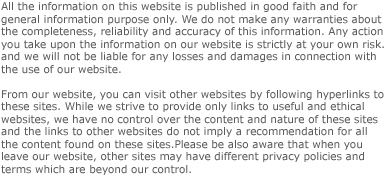Table of ContentsHow The Importance Of Healthcare Policy And Procedures can Save You Time, Stress, and Money.The Basic Principles Of Health Policy - Wikipedia
The rhetoric from the center left declines this view, but their actions tell a different story: Maybe the single most-trumpeted cost-containment device consisted of in the ACA was the so-called Cadillac Tax, which looks for to contain costs exactly by requiring healthcare customers to deal with a higher share of minimal expenses.
When it comes to healthcare, insured customers pay fixed premiums on a monthly basis regardless of whether or not they check out a physician. Then, when they do visit a doctor's office or go to the medical facility, insurance pays for some (frequently even http://mylesfgdm356.cavandoragh.org/the-single-strategy-to-use-for-what-is-a-deductible-in-health-care most) of the minimal expense of this go to. When the repaired cost of paying a premium is satisfied, each subsequent visit to a health service provider is then partly to fully supported by the insurance business, and this means that the patient does not face the full minimal expense of the choice to acquire health care.

Instead, they would argue that most Americans are just overinsured which more health care costs must be financed out of pocket until those expenses end up Discover more here being expensive, at which point insurance would then effectively begin. Being overinsured and not dealing with the full marginal check here expense of each brand-new check out to a healthcare company is believed to make Americans overconsume healthcare, possibly utilizing resources (i.e. what is the formulation stage of a health care policy., money paid out by their insurer) to get treatments that they would not have looked for had these treatments' full marginal expense been dealt with (that is, had they been needed to pay the costs themselves).

First, unless one is willing to increase cost sharing even for truly disastrous medical costs, such steps will miss out on the primary expense chauffeurs in the U.S. healthcare system. Eighty percent of health dollars are invested on simply 19 percent of health customers, and 50 percent of health dollars are invested on just 5 percentpresumably the sickest clients (Gould 2013b).
Second, the assumption that all ethical hazard results in financially ineffective overconsumption of healthcare might well be incorrect. what are some health policy issues related to providing quality of care?. Nyman (2007) straight concerns this theory by arguing that a big part of ethical threat represents healthcare that ill customers would not otherwise have had access to without the earnings that is transferred to them through insurance coverage - who is eligible for care within the veterans health administration?.
Take the example of an adult who has lost front teeth in a bicycling mishap - senate health care vote when. Having missing out on teeth is obviously not deadly, however it is rather most likely that if insurance coverage gave the cash-equivalent expense of replacing the teeth to this person, they would decide to do precisely this and not spend the money on other items and services.
Getting My Health Policy - American Nurses Association (Ana) To Work
This recognition that not all ethical threat is financially inefficient is becoming well understood in other branches of economics. Chetty (2008) makes similar arguments in the context of joblessness insurance, focusing on the reality that unemployment insurance benefits resolve a liquidity issue instead of developing a disincentive to look for work.
He discovers that higher-than-average joblessness insurance benefits increase unemployment period just for workers with no liquid wealth. This suggests highly that it is the relief of liquidity restrictions and not the disincentive to workstemming from decreases in the "expense" of leisure (i.e., the loss of earnings) spurred by the receipt of UIthat drives reactions. This expense per covered worker was then compared with typical incomes in the fifths of the wage distribution. The counterfactual of no excess health expenses was simulated by holding employer contributions to ESI fixed as a share of total settlement over the period. Information from EPI State of Working America Data Library 2018 in addition to BEA 2018, NIPA Tables 7.8 and 6.9 It must be noted that these estimations might downplay the damage that rising health care costs have actually done to employees in the bottom two-fifths of the wage distribution.
Initially, the crowd-out of salaries from rising ESI premiums has actually been larger than average for the bottom two-fifths, determined in percentage terms (as seen in the last row of the table). Second, while this chart shows the crowd-out of earnings taking ESI protection disintegration into account, for those employees who continue to receive ESI, the wage crowd-out originating from increasing ESI premiums (not shown here) is much greater in portion terms for employees in the bottom two-fifths than for other employees, for the easy reason that ESI premiums constitute a much greater share of these workers' earnings. how much does medicaid pay for home health care.
Lastly, the table shows plainly that ESI coverage has eroded most considerably for employees in the bottom two-fifths of the wage distribution (as seen in the 2nd set of rows, "ESI coverage rate"). This erosion is surely associated to the fact that development in ESI premiums relative to these workers' earnings has been severe.